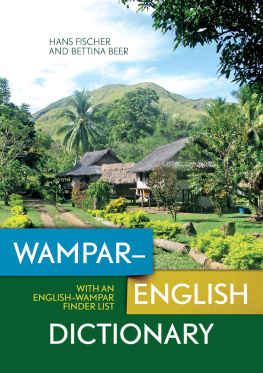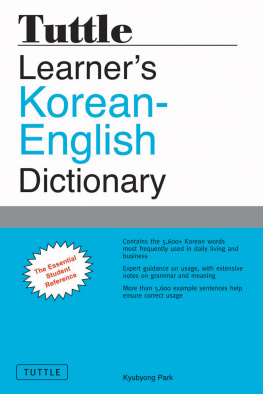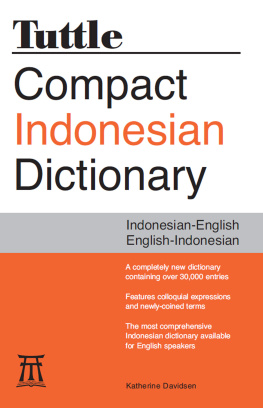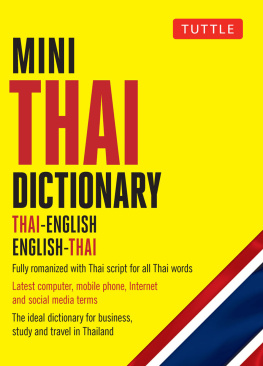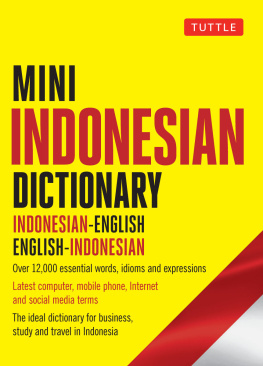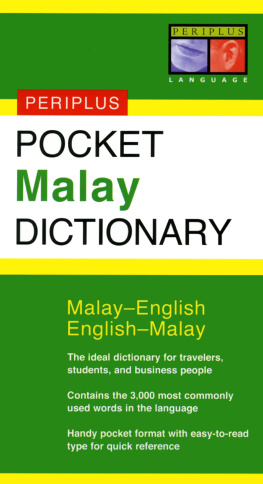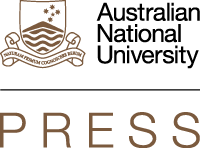WamparEnglish Dictionary
with an EnglishWampar finder list
WamparEnglish Dictionary
with an EnglishWampar finder list
Hans Fischer and Bettina Beer
Published by ANU Press
The Australian National University
Acton ACT 2601, Australia
Email: anupress@anu.edu.au
Available to download for free at press.anu.edu.au
A catalogue record for this book is available from the National Library of Australia
ISBN (print): 9781760464783
ISBN (online): 9781760464790
WorldCat (print): 1273662928
WorldCat (online): 1273662727
DOI: 10.22459/WED.2021
This title is published under a Creative Commons Attribution-NonCommercial-NoDerivatives 4.0 International (CC BY-NC-ND 4.0).
The full licence terms are available at creativecommons.org/licenses/by-nc-nd/4.0/legalcode
Cover design and layout by ANU Press. Cover photograph by Bettina Beer.
This edition 2021 ANU Press
Contents
vii
Key to abbreviations
adj.
adjective
adv.
adverb
conj.
conjunction
dem.
demonstrative
excl.
exclusive
incl.
inclusive
intens.
intensifying possessive pronouns
interj.
interjection
interrog.
interrogative
n.
noun
num.
numeral
p.
person (1.p., 2.p., 3.p.)
pers. pron.
personal pronoun
pl.
plural
poss. pron.
possessive pronoun
prep.
preposition
pron.
pronoun (pers. + poss. = personal + possessive)
refl.
reflexive
sg.
singular
v.
verb
For loanwords from other languages the following abbreviations are used:
E.
English
G.
German
Jb.
Jabm
TP
Tok Pisin
WamparEnglish Dictionary
viii
For kinship terms the following abbreviations are used:
B
Brother
D
Daughter
F
Father
H
Husband
M
Mother
S
Son
W
Wife
Z
Sister
Other abbreviations:
invar.
invariable
lit.
literally
opp.
opposite meaning
(?)
when consultants were not sure
Special characters:
^
used as indicator for a long vowel (, , , , ), only in headwords of this dictionary, not in finder list and not in texts
word from Georg Strzenhofeckers manuscript
<>
plant or animal identified with the help of pictures from the literature
plant photographs taken by Piotr Ltkes and identified by Roy Banka (PNG Forest Research Institute, Lae)
ix
Acknowledgements
Hans Fischer worked for more than years on earlier versions of this dictionary. Many individuals from several generations made his work possible: from Wampar men who, in the very early days of contact, helped Lutheran missionaries understand the language and translate the Bible, men who worked together with Hans Fischer to record, transcribe and translate texts, all the way to todays young Wampar women and men who supported this project with their interest in their own changing and slowly disappearing vernacular. All the anthropologists we mention in the following introduction took earlier versions of the dictionary to the field, commented on and added to it.
Hans Fischer died in 2019; I am very grateful to all the people who supported the posthumous publication of this WamparEnglish dictionary. Andrew Pawley, with his expertise and long experience in the editing of language material, kindly encouraged us not to give up on this project when obstacles loomed, and gave valuable advice on an earlier version of the dictionary. Susanne Holzknecht, whose comparative studies on Markham languages have been invaluable, also contributed to the completion of this dictionary with her corrections, advice and helpful comments. I am grateful too for Angela Terrills suggestions and careful copyediting of the manuscript. The styles used in the dictionary are based on those developed by Catriona Malau for the dictionary of Vurs (Vanuatu) that is also published by ANU Press. Liselotte Hermes da Fonseca and Sara Drr compiled first versions of the finder list.
Introduction
This dictionary is a result of Hans Fischers long-term fieldwork among the Wampar ( Ngaeng Wampar , Wampar people). Wampar are a population of about 12,000 15,000 persons, occupying the middle Markham Valley in Morobe Province, Papua New Guinea (PNG), close to the city of Lae. Their neighbours often call them Laewomba , a name also used in some earlier literature (e.g. Bttger 1912; Neuhauss 1909, 1911; Sack 1976). Their language, Dzob Wampar , belongs to the Markham family of the Austronesian languages. Today most Wampar speak not only Wampar but also the PNG lingua franca Tok Pisin (TP).
Five of the eight Wampar villages (Munun, Ngasawapum, Gabsongkeg, Gabmadzung, Dzifasing, Tararan) are situated near the Highlands Highway, north of the Markham River, and three are south of it (Mare, Wamped, Gabantsidz). The highway connects the coastal city of Lae with the Highlands provinces (see Figure 1). Additional Wampar and migrant settlements have proliferated in conjunction with new economic opportunities, including growing cash crops, cattle and chicken farms, and marketing along the main highway. NonWampar language communities and neighbours to the east are the Yalu, Musom, Lae and Labu; to the north the Erap, Mungkip and Duwet (cf. Hooley 1964, 1971, 1976); to the west the Adzera (Holzknecht 1989); and to the south the Watut (Carter et al. 2014), Mumeng and Buang.
After some initial difficulties, peaceful relations between Wampar settlements and Lutheran missionaries of Neuendettelsauer Missionsgesellschaft were established in 1909, which led to the construction of a mission station in 19101911 at Gabmadzung, near Gabsongkeg village. In the mid-1920s, the Neuendettelsau Missionaries baptised the first Wampar. While the Lutheran Church dominated Christian life for several decades, today Wampar are divided among various Protestant denominations.
Literally, Dzob Wampar means Wampar language. Throughout this dictionary we use the word Wampar for the people as well as the language, when the context makes the referent clear.
WamparEnglish Dictionary
Figure 1: Location of Wampar settlements and the Markham Valley
Source: Heiner Schnoor
The proximity of many Wampar settlements to Lae and the Highlands Highway has brought them extensive contacts with other ethnic groups. Schools, health facilities and churches have been established on their lands, and pastors, teachers and health workers from other parts of PNG have come to work and live among the Wampar. World War II brought contacts with both Japanese and Australian soldiers. In recent decades, many Wampar have gone for training, study or work to towns and other provinces of PNG, where they sometimes married. Accordingly, marriages with non- Wampar have increased markedly over the last years (Beer & Schroedter 2014). This has contributed to changing language patterns. Children from inter-ethnic couples often learn two or three languages, and some grow up with only a passive knowledge of Wampar (Bacalzo 2012, 2021). Today, nearly everybody speaks TP, and Wampar tends to be used less frequently in everyday life.
Next page
